Pound plunges after Bank of England's dovish rates signal
Central bank revises its growth forecast for UK economy
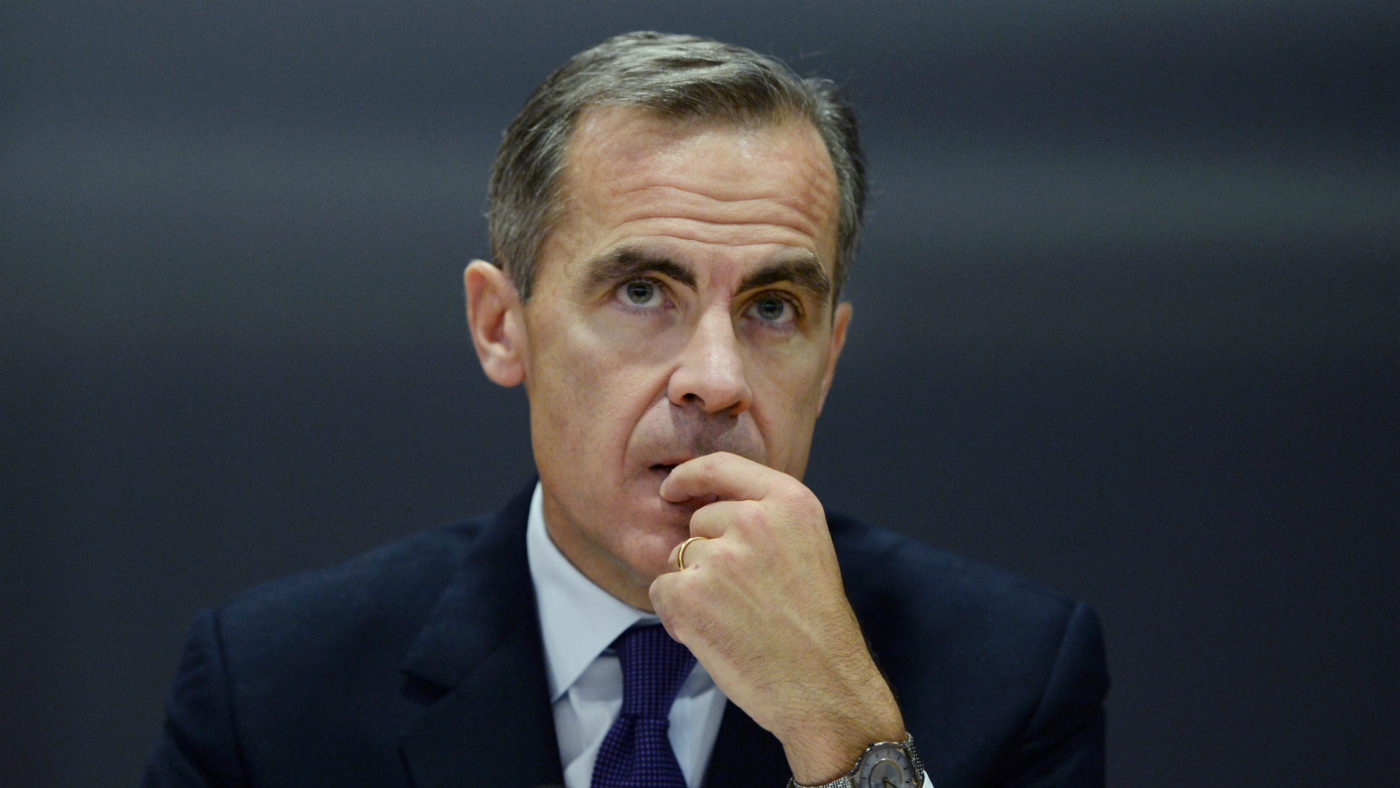
Interest rates: weaker UK growth dampens early rise hopes
24 December
Those hoping for an early increase in UK interest rates in 2016 to boost saving rates and deter a build up of assets in areas such as property, look more likely to be disappointed.
Earlier this month the Federal Reserve increased its target base interest rate range for the first time since 2006, marking the beginning of the end of an unprecedented period of near-zero rates that has persisted for seven years.
The Week
Escape your echo chamber. Get the facts behind the news, plus analysis from multiple perspectives.

Sign up for The Week's Free Newsletters
From our morning news briefing to a weekly Good News Newsletter, get the best of The Week delivered directly to your inbox.
From our morning news briefing to a weekly Good News Newsletter, get the best of The Week delivered directly to your inbox.
Some had thought the Bank of England might quickly follow suit, debunking the belief that a rate rise would not come until the end of 2016 or even 2017.
However, those hopes appear to have been dashed after the Office for National Statistics released the latest revisions to recent economic growth figures, which did not contain good news, yesterday. The BBC notes that third-quarter growth was marked down from 0.5 per cent to 0.4 per cent, the lowest since late 2012, while the second quarter was also downgraded from 0.7 per cent to 0.5 per cent.
Weaker growth was attributed to reduced growth in the powerful services sector, as money flowing in from overseas fell in the face of global economic headwinds. More crucially, unit labour costs - the cost per hour of output that the Bank of England has set as a key condition of raising interest rates - fell from 2.2 per cent to less than two per cent.
Overall growth for 2015 is now expected to come in at around 2.2 per cent. Although much depends on what happens in the final quarter, notes the BBC. Growth of 0.6 per cent was expected but there was a slow start for the services sector in October.
A free daily email with the biggest news stories of the day – and the best features from TheWeek.com
Philip Shaw, economist at Investec, told Reuters his long-standing call for rates to be increased in May, in line with wider analyst expectations was now under threat. "There will be even less near-term pressure to raise interest rates," he said.
However, Shaw did remain broadly positive over growth in 2016 as a whole, which suggests there is potential for the picture to improve. "We remain of the view that the expansion is not losing significant traction and that solid growth of around 2.5 percent will be achieved."
Why UK interest rates may not follow US rise… yet
21 December
Interest rates are finally starting the long march – in fact, probably more of a crawl – towards normality in the US, but there is little reason to expect the UK to follow suit immediately.
Martin Weale, an economics professor and external member of the nine-strong panel at the Bank of England which decides each month on where to set the base rate, told the Sunday Telegraph the pressure for an increase is "slightly less immediate". He cited slowing wage growth and continued low inflation, as well as his belief that changes to rates will feed through to the economy quicker.
The paper notes that Weale is a noted 'hawk' on the committee, meaning he is generally believed to support higher rates. Another hawk, Ian McCafferty, has been alone in voting for a 0.25 per cent rise since August, on the basis that high employment will push consumer prices higher over the two years it is generally assumed it takes for a change to filter through into the real economy.
But Weale said rate rises could feed through "a little bit earlier", thereby endorsing the case for keeping rates on hold. He also said the latest leg lower in the oil price will hold down inflation, which many had assumed would bounce back in the new year, and that wage growth data suggested little upwards price pressure from pay.
Last week it was revealed that average wages including bonuses rose 2.4 per cent year on year in November, down from three per cent in October.
Weale does not, however, foresee rates being held for as long as markets are currently expecting. Bets by investors estimate that the first rise in UK rates will happen in early 2017, but Weale said there should be an increase next year as a tighter labour market will eventually begin to see prices pick up.
Wages should also increase at a faster average pace next year due to the introduction of the national living wage. Outside of inflationary pressure there are those who want to see rates move higher to protect against the build-up of dangerous asset price bubbles in sectors such as property, as investors hunt for yield.
Interest rate rise: long overdue or dangerous and premature?
18 December
The rise has finally happened, but that doesn't stop the merits of the Fed's recent decision to increase interest rates being a hot topic in the banking and financial world.
Experts are divided between those who think the modest rise after seven long years at record lows was long overdue and those who believe the increase has come too soon for a global economy that never fully recovered from the financial crisis. Both sides think that some very severe consequences would have resulted had the Fed lost its nerve – or are now unavoidable.
Here we round up the arguments either way:
Too soon
Writing on The Guardian's data blog, former Bank of England rate setter David Blanchflower described the move as "fingers-crossed-and-hoping economics". He cites the lack of inflation and the mirage of low unemployment, which he says are masking much-reduced rates in the number of people actually working.
As controlling inflation and encouraging full employment are the two elements on which the Fed's mandate to control monetary policy rests, Blanchflower says the rate rise at this point in time is "especially hard to understand". He reckons there is a 50:50 chance there will be a shock to the economy that will mean the rise is reversed, with the worry being that "this might mean rates going negative".
Ambrose Evans-Pritchard echoes these fears in his column for the Daily Telegraph. He also highlights the problems the rates rise might cause such as a consequently stronger dollar choking off exports and crushing commodity prices, and stresses the threats to emerging economies that might see huge capital outflows to the US.
Not soon enough
Some experts say the Fed should have taken this step much earlier. "The US economy is in a solid growth phase, and unemployment is down to five per cent," meaning it is at 1970s lows, notes Rolf Wenkel on Deutsche Welle. "When, if not now, should the central bank try to return to normality?"
Others point to the market distortions caused by what the Financial Times's Gillian Tett describes as an "addiction to cheap money". Capital has been shifted away from low-yielding, mainstream assets in favour of longer-term alternatives "with more credit risk". Pension funds and insurers are struggling to achieve required yields; asset 'bubbles' are emerging in areas like property.
Moreover, what happens if we do not move from near-zero rates until the next downturn? As Pritchard admits, the Fed "typically needs 350 basis points of monetary ammunition to fight a downturn" and we've "never been in a predicament where a global recession began with rates already near zero".
Don't panic
Tett says that to ease the transition to higher rates without causing the crash predicted by doomsayers, the Fed is aiming for a "Goldilocks policy". This is why it emphasised that rises will be gradual – and the success of this communication in turn is why markets reacted so well to the announcement.
In that context perhaps the whole thing is overblown. After all, rates are now targeted at between 0.25 and 0.5 per cent and still by any objective definition 'near zero'. Market predictions suggest the Fed will make just two further small rises next year.
"There's a remote possibility the media might be exaggerating the importance of this quarter-point rise," says Brett Arends on Market Watch.
Interest rates: was the Fed right to raise them?
17 December
It "could hardly be called a spur of the moment decision", notes The Guardian's Larry Elliott. But the Federal Reserve's move to increase its target interest rate for the first time in nearly a decade is, nonetheless, momentous.
The central bank had shown "Hamlet-like indecision" – notably trailing the strong possibility of a rate increase ahead of its September meeting before being unnerved by market gyrations emanating from China. "Now, as Julius Caesar said when he crossed the Rubicon… the die is cast."
In its morning front page splash, the Financial Times called the increase in the benchmark interest rate of 0.25 per cent a "historic gamble". Rates have not risen since 2006 (when they went up to a now-unthinkable 5.25 per cent) and have been close to zero since 2008.
The epic period of dormancy in monetary policy has been the most telling evidence of the profound damage done by the financial crisis. Beginning what the BBC's Kamal Ahmed presciently describes as the "long march back to more normal conditions" is therefore nothing less than a strong "signal about the strength of the US economy".
There are those who argue this is overconfidence and the rates rise is wrong-headed. The Independent's Rupert Cornwell highlights a recent study that shows that a slim majority of US economists reckon rates will be back close to zero in five years' time. Yesterday the FT's leader highlighted weak inflation and the increase in the number of inactive working-age US citizens as a reason for it being "too early" to increase rates.
Others, however, point to the fact that unemployment in America is at 40-year lows and the ultra-low period of rates has already pushed capital into assets such as property, precipitating what some see as a dangerous 'bubble'. In short: delaying a rates rise is as risky as moving too quickly.
This is where the Fed has sought to strike a balance. By raising rates, it has ended the endless speculation over its first move, but also emphasised the word "gradual" to give people confidence that rates will not be ratcheted up recklessly. As Cornwell writes, a rise of a quarter of a per cent will have only a "marginal" effect on savings and mortgage rates. Therefore any portentous warnings are probably exaggerated.
In any case, notes Elliott in the Guardian, having signalled that a rise was in the works and based its evidence on a soaring jobs market, the Fed needed to increase rates in order to avoid damaging its credibility. "This was one of those occasions when the market reaction to doing nothing would have been more negative than the response to a rate increase," says Elliott.
Fed interest rate rise is easier said than done
16 December
As we all know by now, the smart money – in fact most money – is on the Federal Reserve increasing its target interest rates later today.
It'll be the first time it has raised in nearly ten years and the first move from a record for base rates of close to zero in seven years. It has now been so widely trailed that markets will react very badly should the 12-strong panel of rate setters at the central bank lose their collective nerve.
But with rates having been static for so long and during a time of such profound change and upheaval in the banking sector, making a rates hike stick will be easier said than done, says Peter Spence in the Daily Telegraph. This is because the Fed has pumped extraordinary amounts of liquidity into the banking system and in any case only has a catalysing influence on rates movements.
In simple terms, the panel will increase the 'federal funds rate'. This is the rate at which it lends to banks and which therefore sets a benchmark for the rates they charge to peers. It is currently in a range between zero and 0.25 per cent and is expected to rise to between 0.25 per cent and 0.5 per cent.
In practice the process is more complicated. In fact there are two mechanisms that determine this rate, the Financial Times notes: the 'interest on overnight reserves' (IOER) and the 'reverse repo programme' (RRP).
The IOER is charged only to actual banks and is set at the higher end of the target range. It is determined, says Spence, by the Fed lending bonds to institutions, many of whom don't need to rely on the central bank as they once did because of the spectacular increase in funding since the financial crisis.
The IOER is set at 0.25 per cent and this should be increased to 0.5 per cent - but the average interest rate in the market will sit below this level.
To make sure market rates do not sit too low, the RRP, which is the rate charged for lending and repurchase of bonds to a wider set of money market participants, is designed to "act as a floor". It's been newly implemented since the financial crisis and is currently around 0.05 per cent. This will likely move to around 0.25 per cent, but how it will move market rates has not been fully tested.
The combined effect should be to move average rates to somewhere between the 0.25 and 0.5 per cent range, but the FT notes the nature of the move means 'lift off' will be "turbulent". That shouldn't matter to investors, though, who will simply note that the Fed is starting to move back to normal monetary policy.
-
 Nnela Kalu’s historic Turner Prize win
Nnela Kalu’s historic Turner Prize winTalking Point Glasgow-born artist is first person with a learning disability to win Britain’s biggest art prize
-
 Bridget Riley: Learning to See – an ‘invigorating and magical ensemble’
Bridget Riley: Learning to See – an ‘invigorating and magical ensemble’The Week Recommends The English artist’s striking paintings turn ‘concentration into reverie’
-
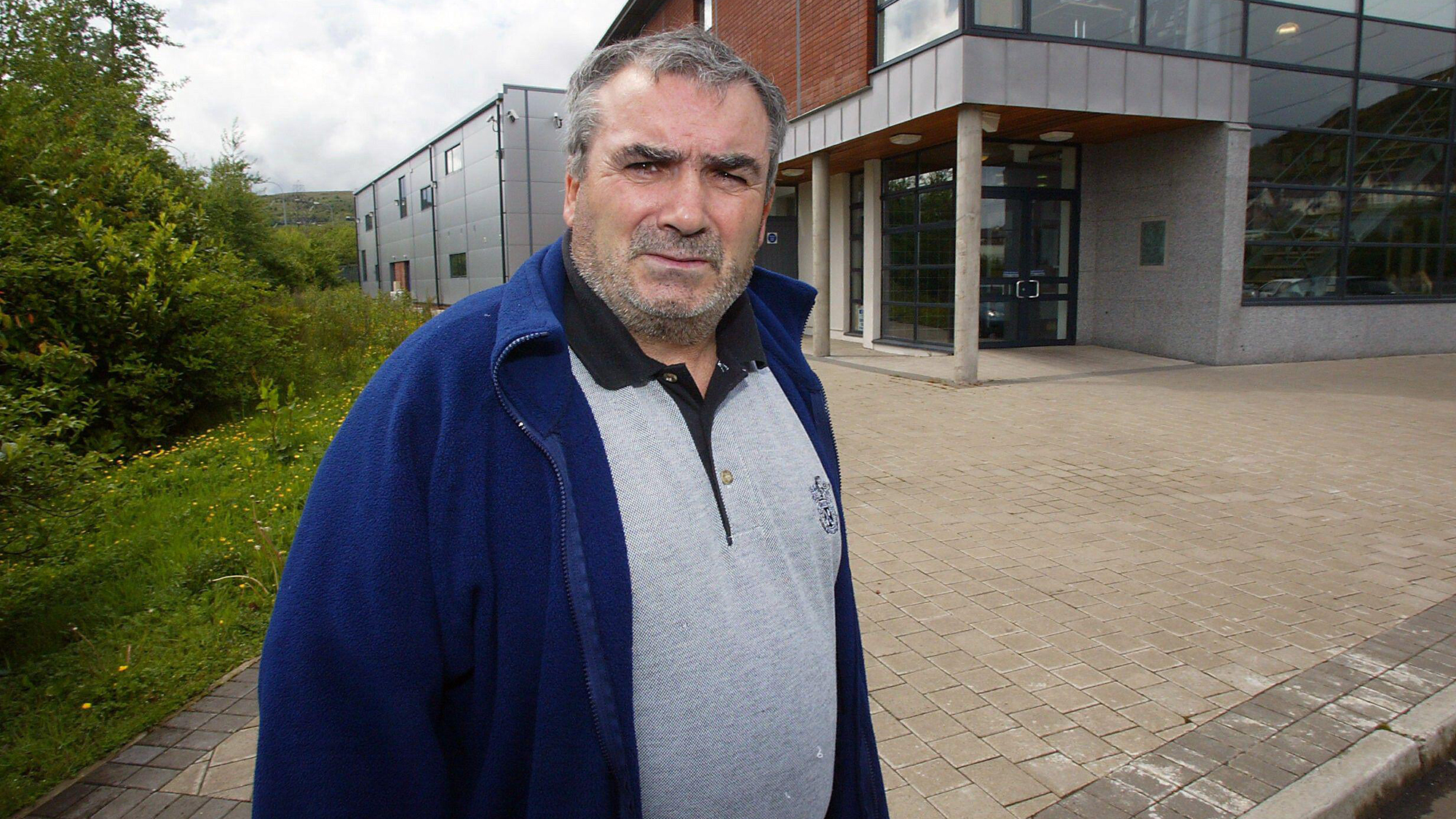 ‘Stakeknife’: MI5’s man inside the IRA
‘Stakeknife’: MI5’s man inside the IRAThe Explainer Freddie Scappaticci, implicated in 14 murders and 15 abductions during the Troubles, ‘probably cost more lives than he saved’, investigation claims
-
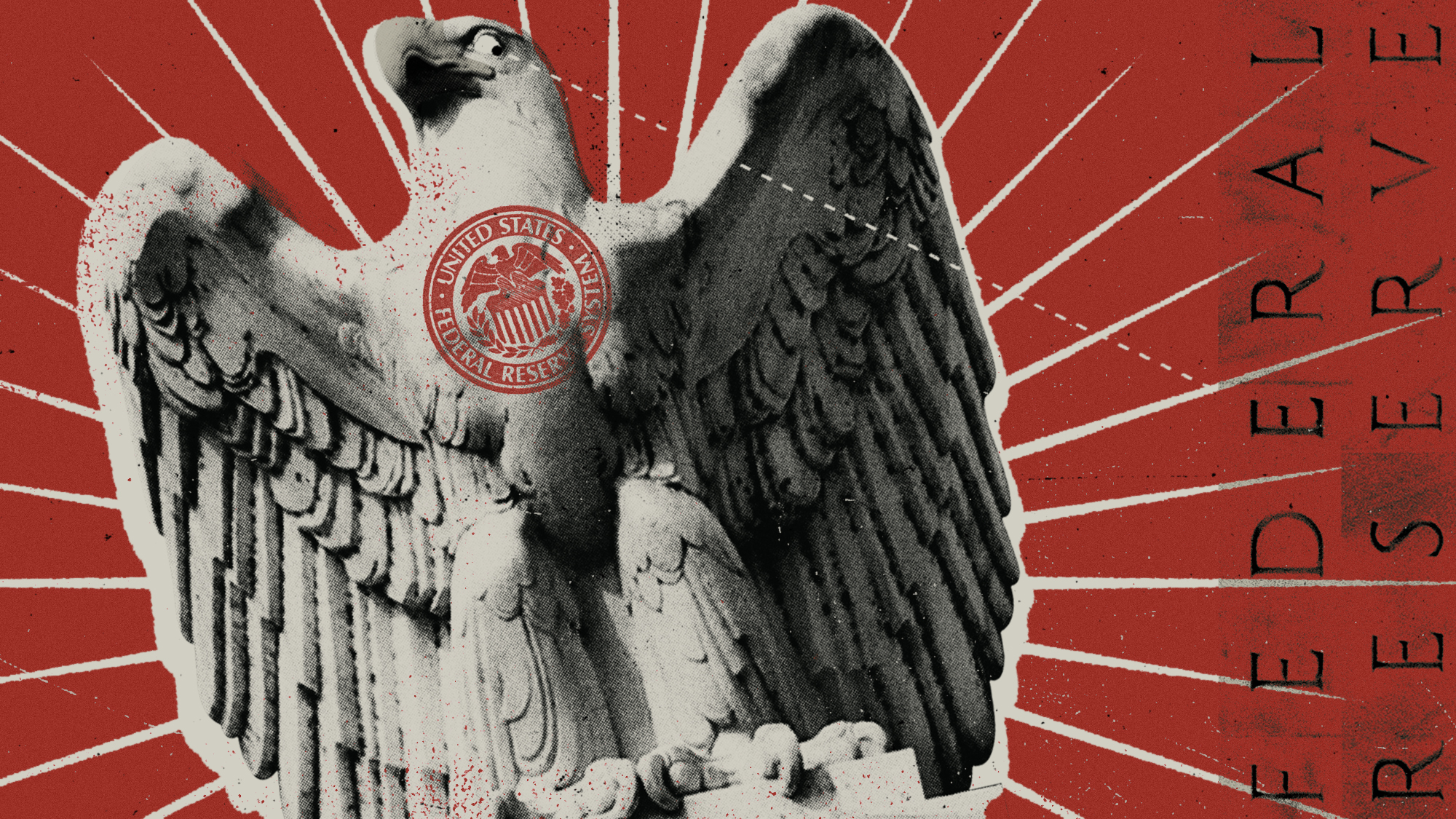 Who will be the next Fed chair?
Who will be the next Fed chair?Today's Big Question Kevin Hassett appears to be Trump’s pick
-
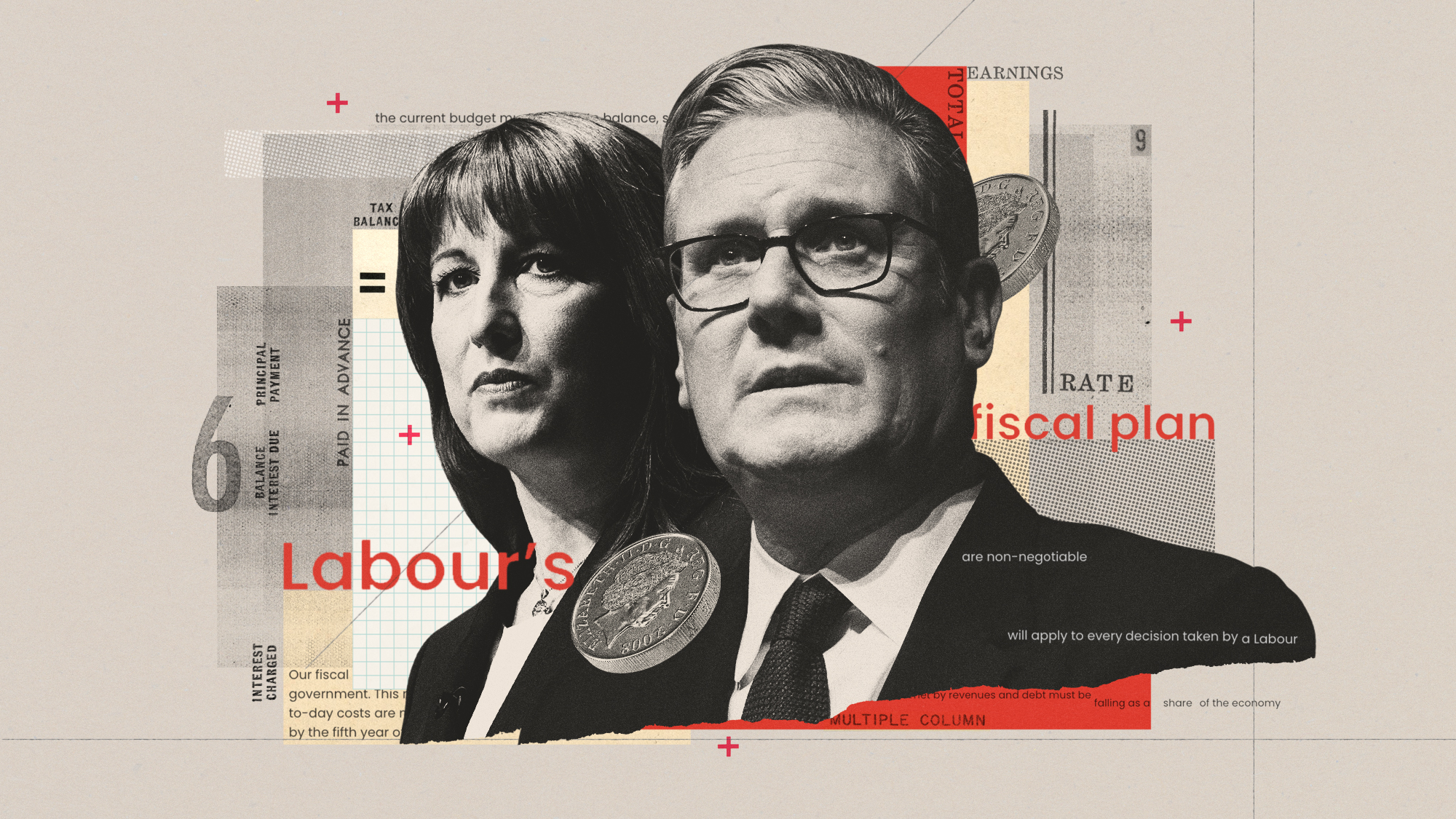 Should Labour break manifesto pledge and raise taxes?
Should Labour break manifesto pledge and raise taxes?Today's Big Question There are ‘powerful’ fiscal arguments for an income tax rise but it could mean ‘game over’ for the government
-
 What are stablecoins, and why is the government so interested in them?
What are stablecoins, and why is the government so interested in them?The Explainer With the government backing calls for the regulation of certain cryptocurrencies, are stablecoins the future?
-
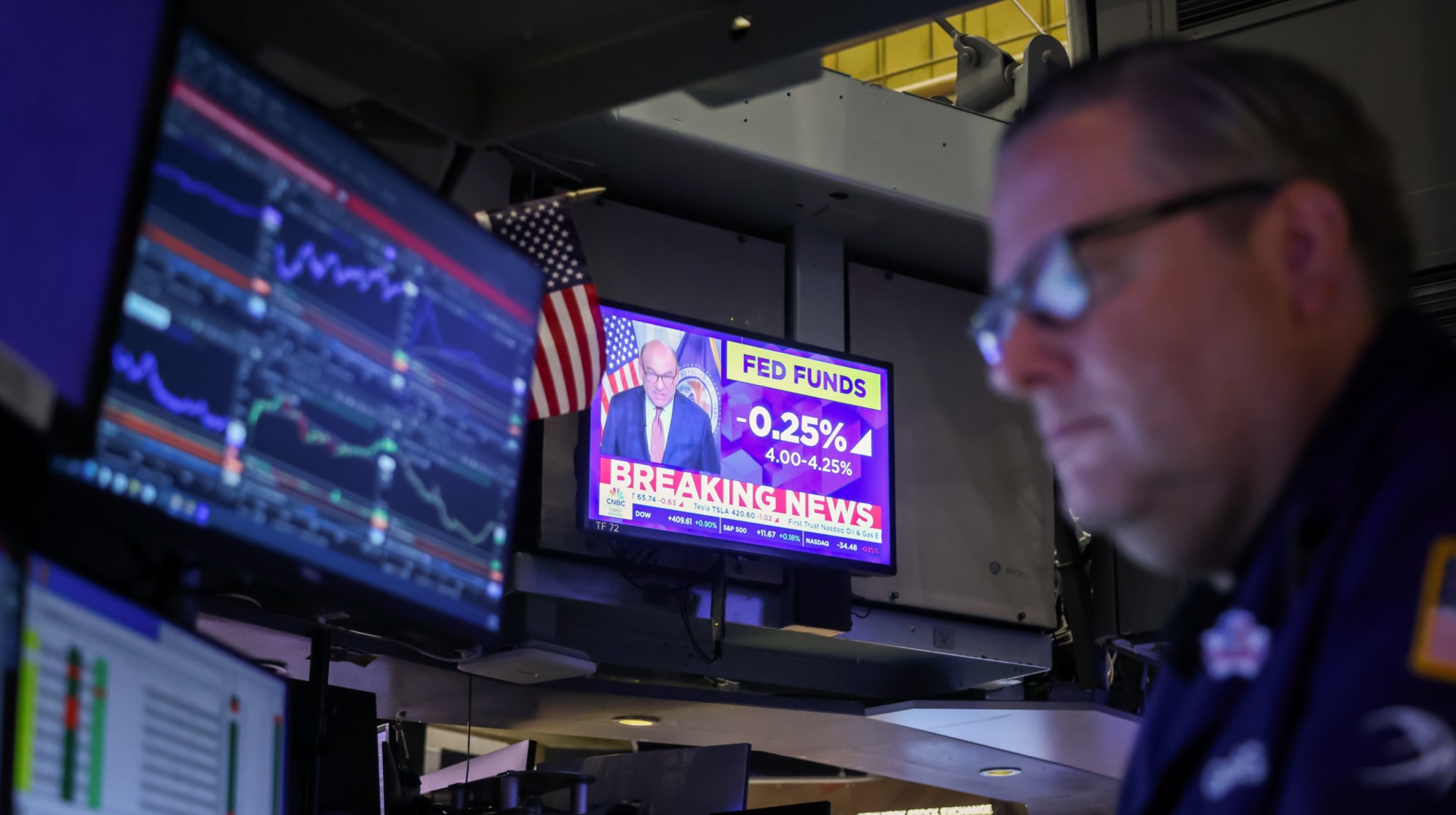 Fed cuts interest rates a quarter point
Fed cuts interest rates a quarter pointSpeed Read ‘The cut suggests a broader shift toward concern about cracks forming in the job market’
-
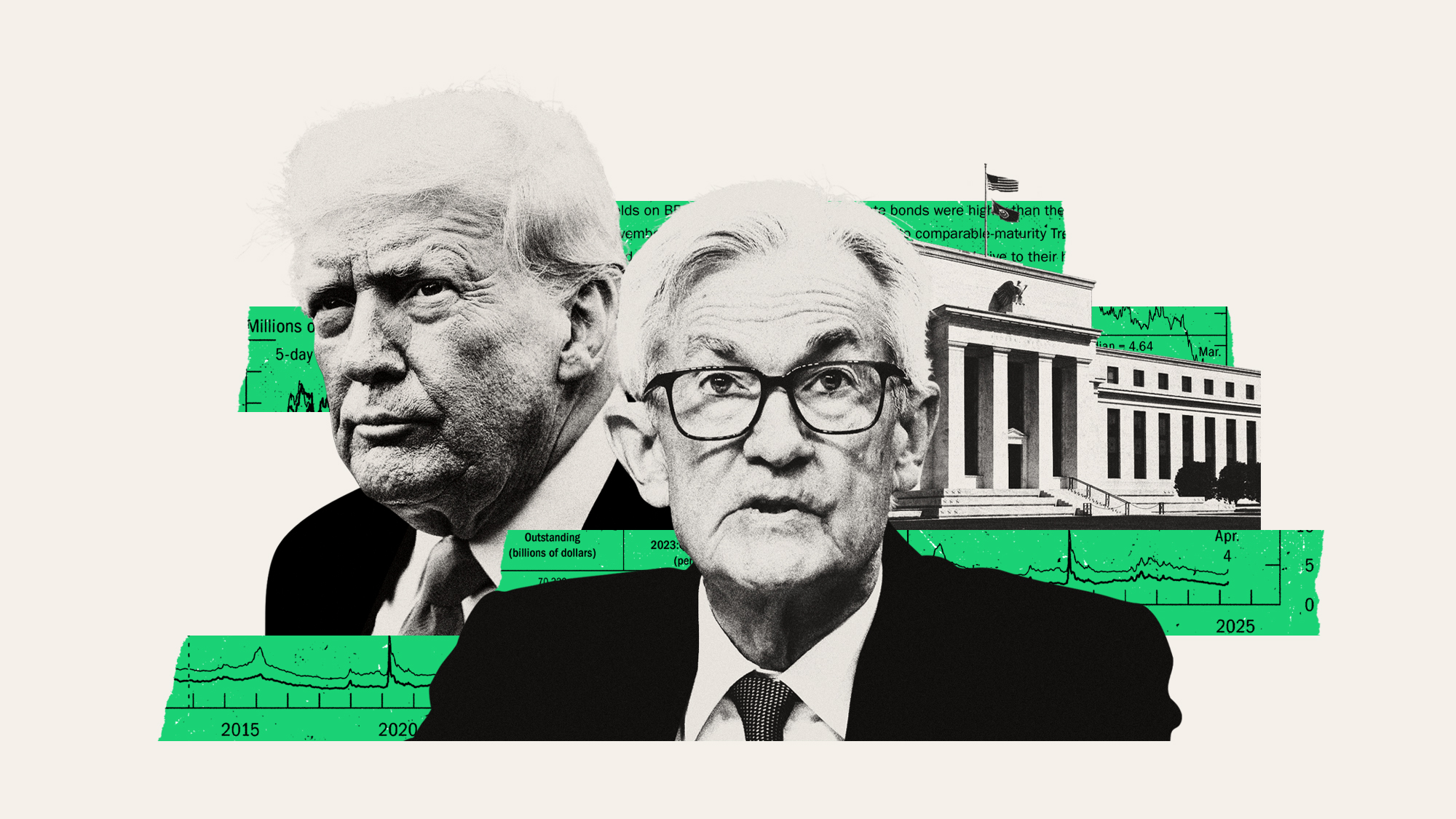 Trump's threats to fire Jerome Powell are unsettling the markets
Trump's threats to fire Jerome Powell are unsettling the marketsTalking Points Expect a 'period of volatility' if he follows through
-
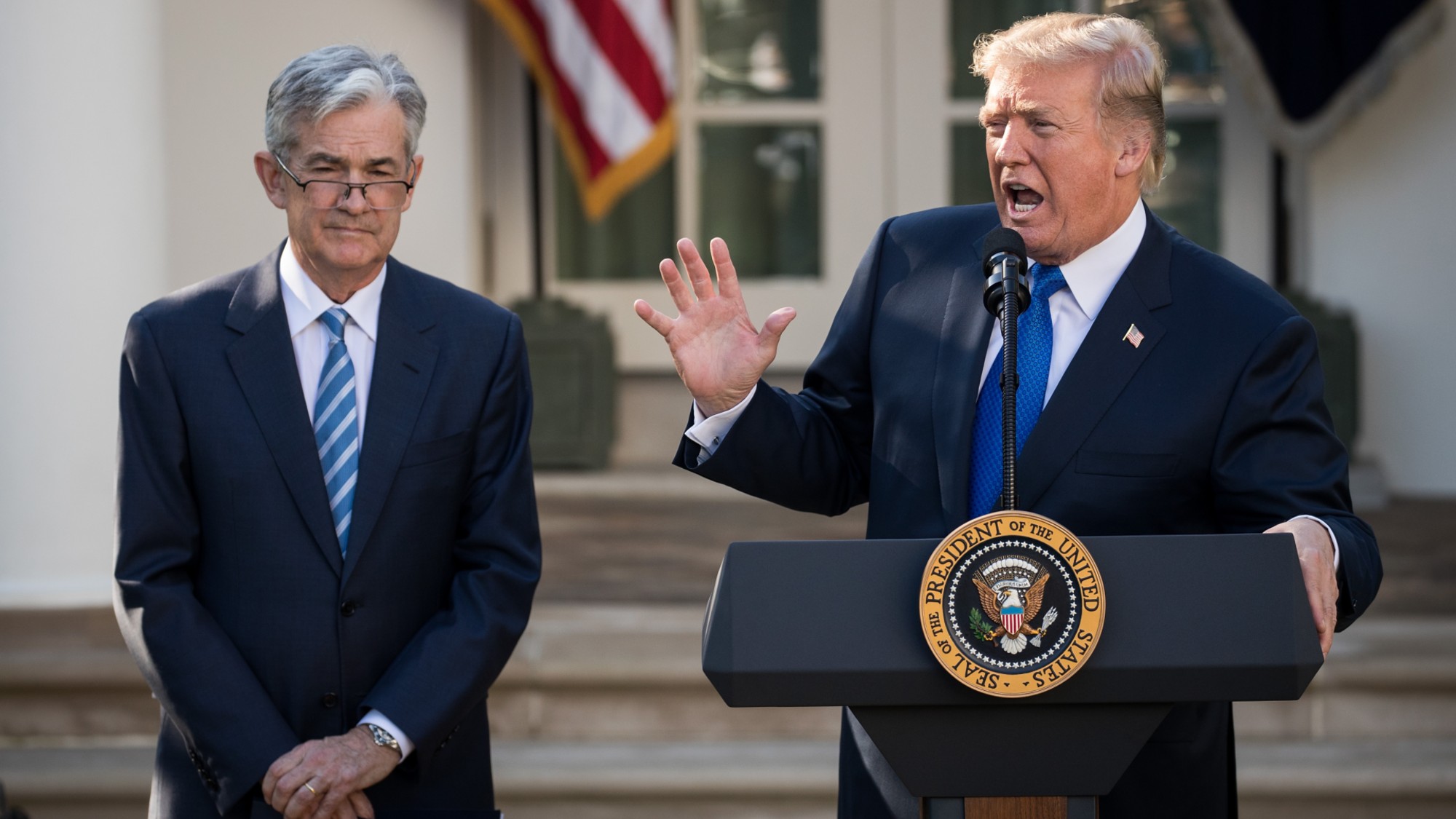 How will Wall Street react to the Trump-Powell showdown?
How will Wall Street react to the Trump-Powell showdown?Today's Big Question 'Market turmoil' seems likely
-
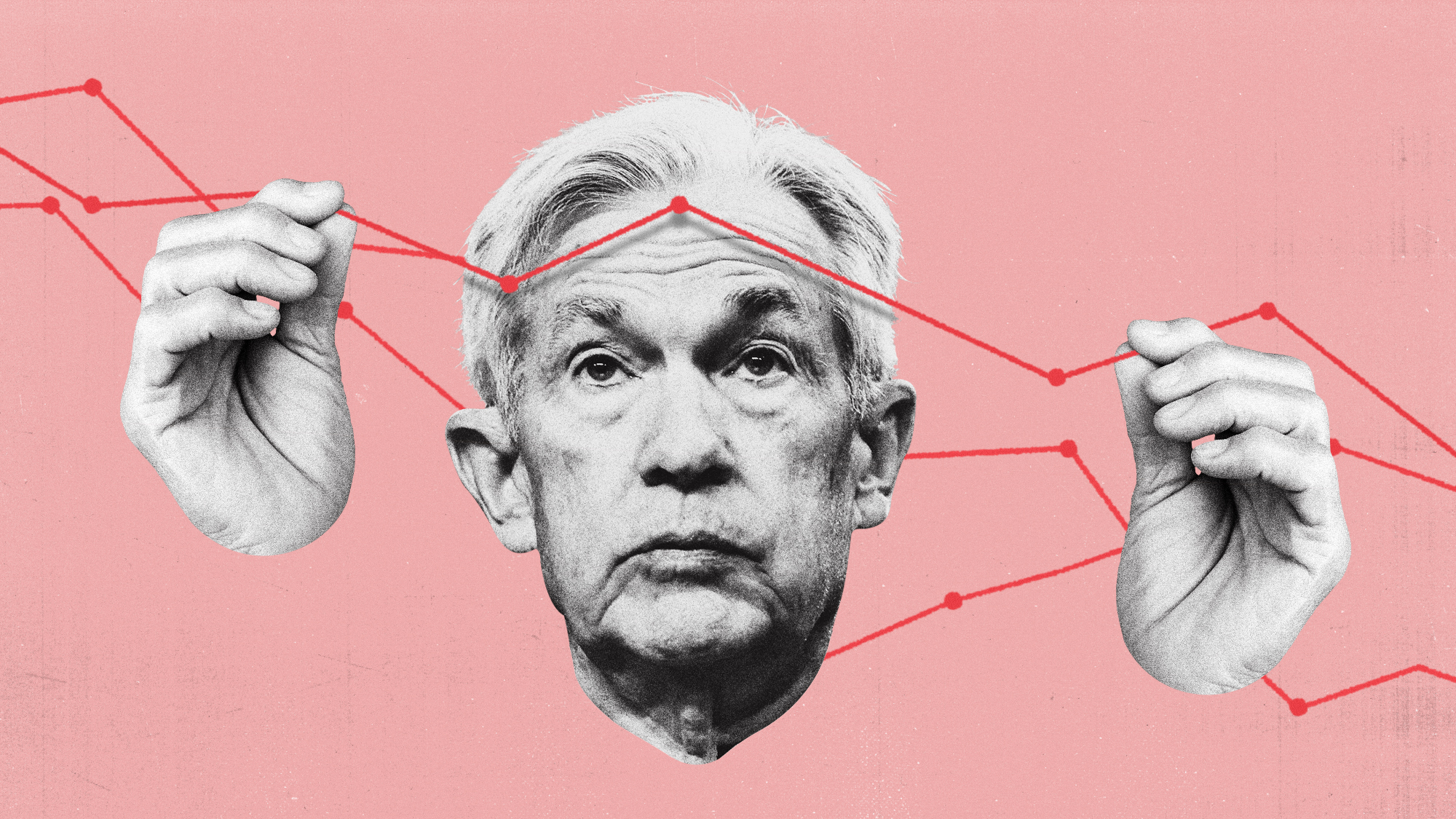 How will the Fed manage Trump's economy?
How will the Fed manage Trump's economy?Today's Big Question Jerome Powell is 'in a bind'
-
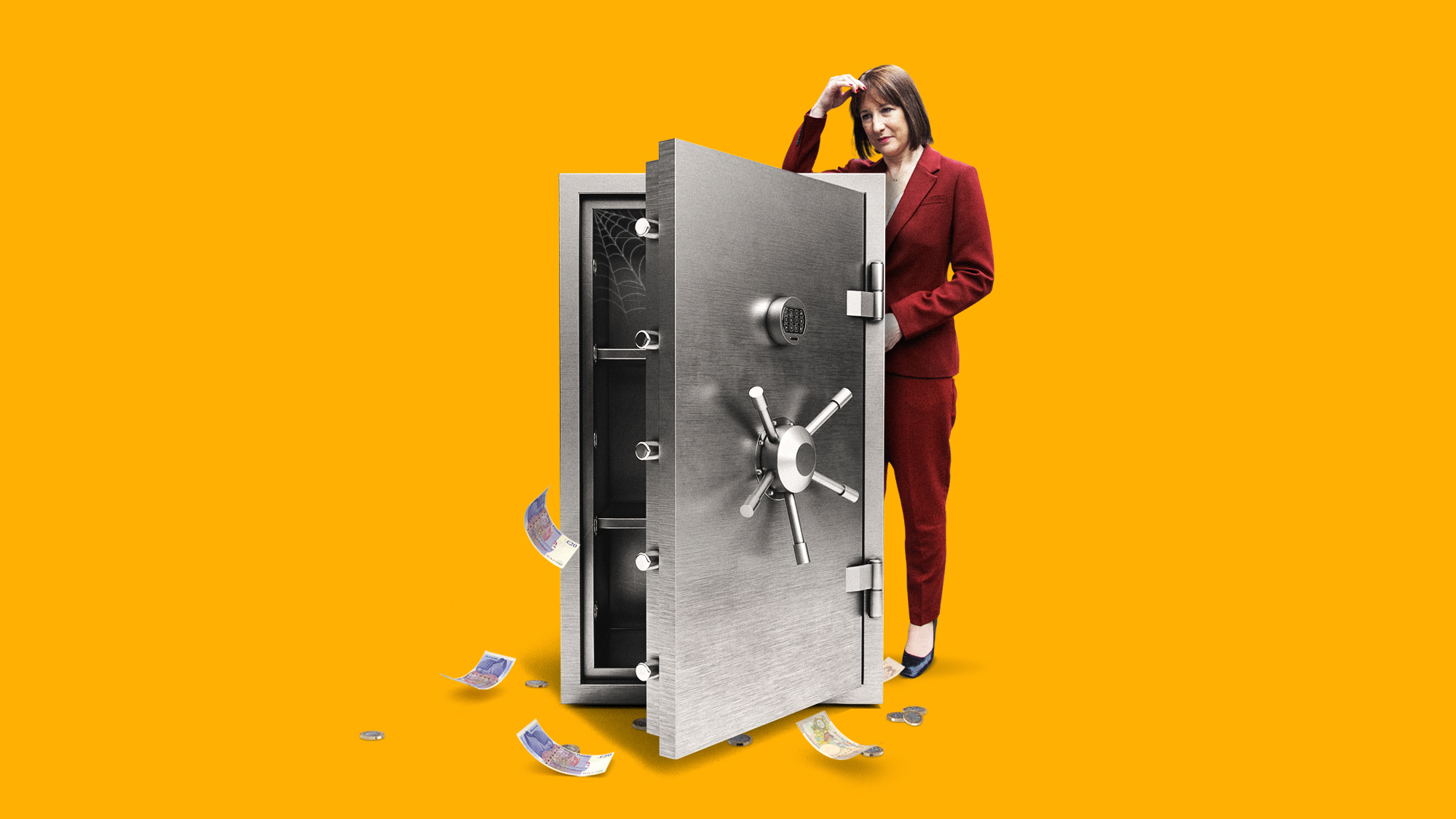 Will Rachel Reeves have to raise taxes again?
Will Rachel Reeves have to raise taxes again?Today's Big Question Rising gilt yields and higher debt interest sound warning that Chancellor may miss her Budget borrowing targets